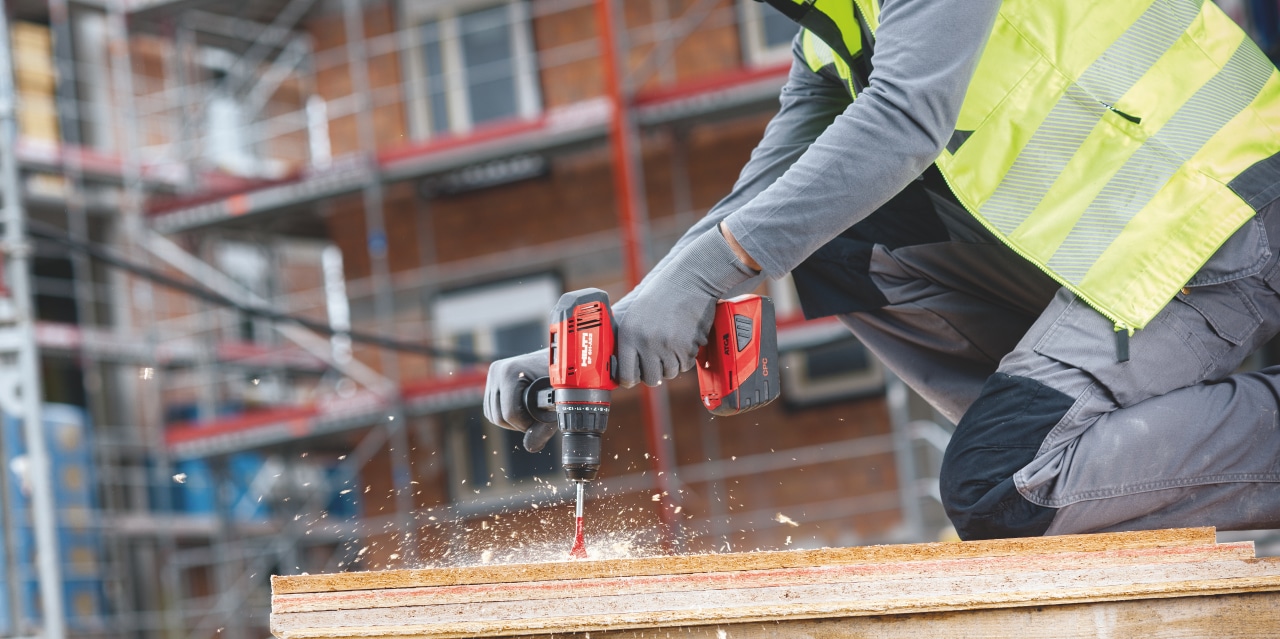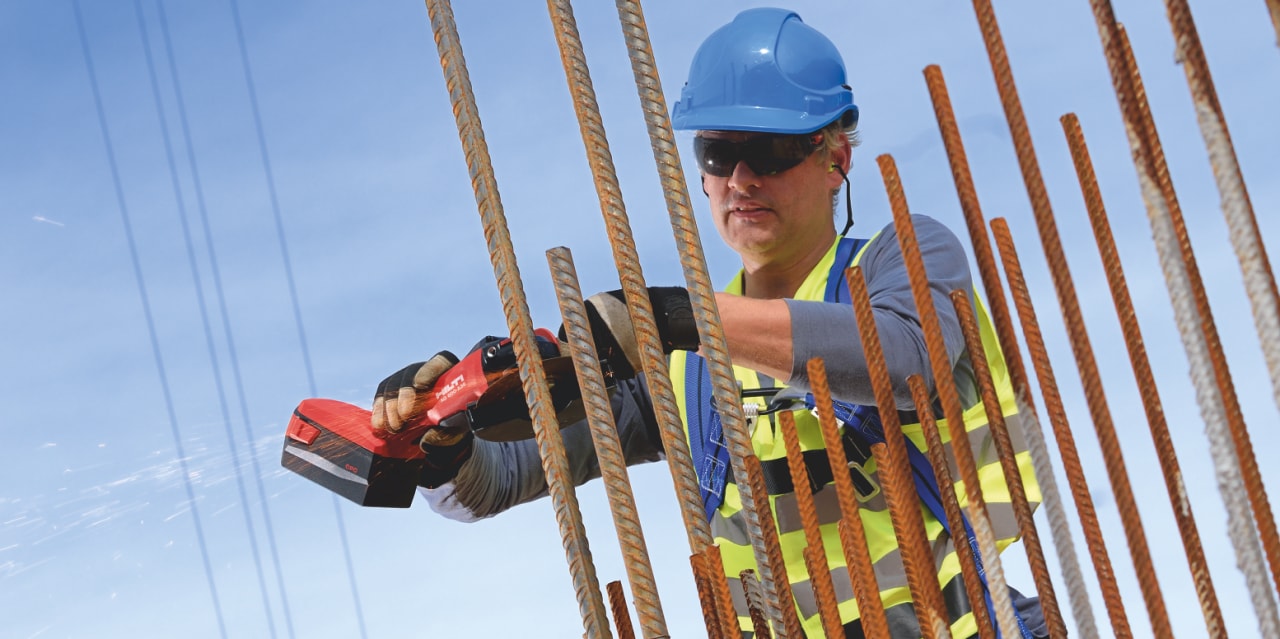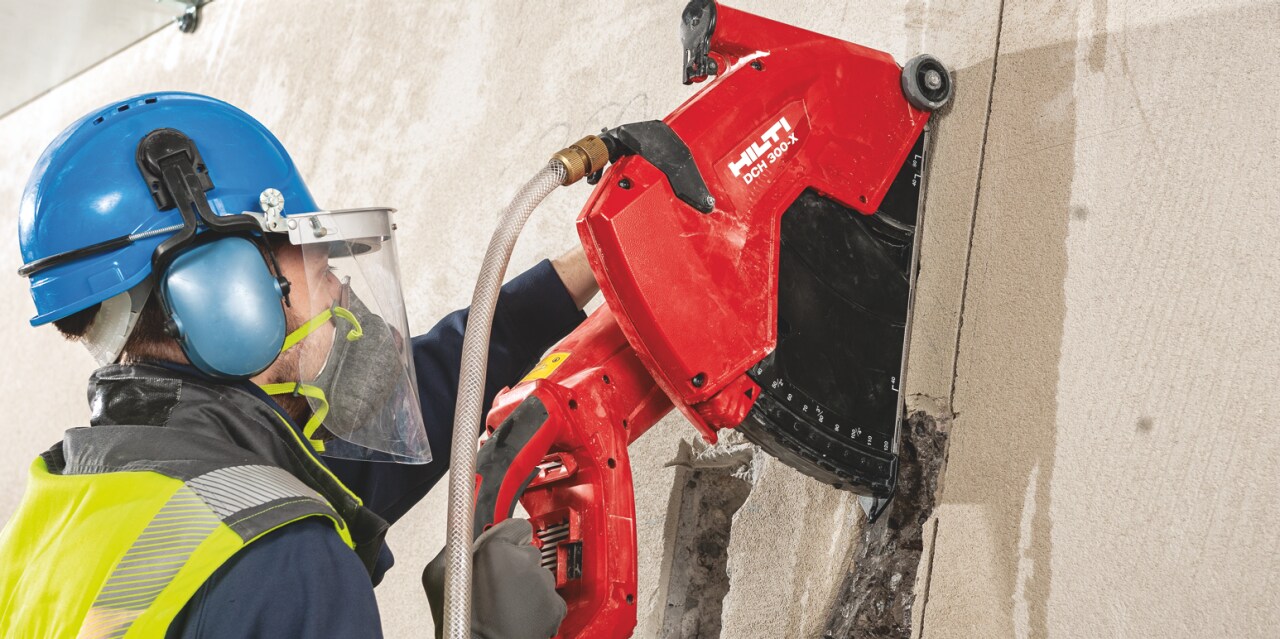- Home
- Company
- Products and Technology
- Safety Features
Safety features
Product features to help make your work safer and more comfortable
Unfortunately, when working with some power tools – particularly those designed to drill, cut and grind – there are some inherent risks to you and your teams.
For example, if a drill bit snags, binds or hits rebar it can kickback on the user, potentially resulting in injury. If a grinding or cutting disc breaks, the broken bits can hit the user or other construction workers. When working at height, unpredictable events like these increase the risk of further injury from subsequent falls.
As a responsible employer, you naturally want to protect your team from injury. Hilti recommends a range of technologies and working practices, structured here under the “STOP Principle” that help you do just that.

Stop kickback in its tracks
When drilling through reinforced concrete, drill bits can jam or bind on rebar, especially in high speed or torque applications. When that happens, the tool can “kickback”, continuing to spin uncontrollably while the bit is stuck in the base material, representing a risk of injury. Additionally, the momentum of the tool can throw the worker off balance, particularly dangerous when working at height.
Substitution: remove risks by using alternatives
Designing out drilling
Place our HAC cast-in anchor channels around the rebar before the concrete is poured, meaning little to no drilling and therefore no chance of hitting rebar.
Technical: choose products that reduce risk
Choosing tools with Hilti Active Torque Control (ATC) can help reduce kickback.
Advanced sensors and a motor brake help reduce kickback, by stopping the tool body from spinning uncontrollably, if a drill bit snags on rebar, or other hidden materials.
ATC is featured in a range of Hilti tools, including:

Cordless combihammers
High-performance cordless combihammers with AVR and ATC for heavy-duty drilling and chiseling in concrete.
Such as the TE 60-ATC-AVR
Cordless hammer drill drivers
Power class cordless 22V drill drivers with ATC and electronic clutch for universal use on wood, metal and other materials.
Such as the SF 6H-A22Organizational: different working methods
Colleagues at all levels should be knowledgeable about the risks of kickback and trained to minimize their exposure to it. To help you with this, Hilti offers comprehensive industry training that is highly interactive and developed for jobsite workers. Our safety training sessions are a mixture of practical exercises with exclusive hardware, media animations and theory.
Personal protective equipment: where risks remain
When using power tools and other equipment, workers must have full Personal Protective Equipment (PPE), including hard hat, eye protection, overalls, gloves, safety shoes and other necessary items.
It’s also essential that all construction workers receive training on the safe use of their tools and carefully follow the operating instructions. When drilling or chiseling you should always hold the tool firmly with both hands, keeping a stable stance. Because there is always a chance that a bit will jam or bind, you should always keep your body out of the kickback recoil area – even if using a tool with ATC.

Reducing risk of cuts
When using cutting tools - such as angle grinders, gas saws and handheld saws, particular care should be taken due to the potential risk of cuts. Injuries can occur if a blade or disc comes into contact with a construction worker and if a grinding or cutting disc breaks, the broken bits can hit the user or other workers.
Applying the “STOP Principle” can increase safety in the following ways.
Substitution: remove the risks of cuts on the jobsite
Reduce the amount of material cut on the jobsite by ordering pre-cut items from the manufacturer (Hilti offers this service) or by cutting them offsite in a more controlled and safer environment.
Technical: safety features to help reduce risk

Dead man's switch
Automatically stops the tool when the trigger is released.

Quick-acting brake
Quick-acting brake stops the disc within a few seconds – ideal when working in cramped conditions.

Disc guard
Protects workers – and those around them – from fragments of broken disc hitting them at high speed.
Organizational: working practices to improve safety
Reviewing organizational practices and procedures is also vital for increasing jobsite safety for workers using cutting tools. Measures you can take include:
- Regular tool and consumables checks: tools should be regularly tested, maintained and cords and consumables checked for damage. Workers should complete a visual check of the tool – cord, consumable, disc guard etc. – before starting work
- Policies that improve safety: to ensure guards, covers or other safety features are in good working order and are not tampered with
- Comprehensive training: colleagues at all levels should receive detailed industry training and regular refresher sessions to ensure workers understand the risks of working with cutting tools. To support this Hilti offers training on the use of angle grinders, hand-held saws and gas saws
Personal protective equipment: where health risks remain
When using cutting tools, workers must have full Personal Protective Equipment (PPE), including hard hat, eye protection, overalls, gloves, safety shoes and other necessary items.
Cutting tools should be guided with both hands and used from a safe and balanced standing position. To avoid risk to others, they shouldn’t be used in proximity to other construction workers.
